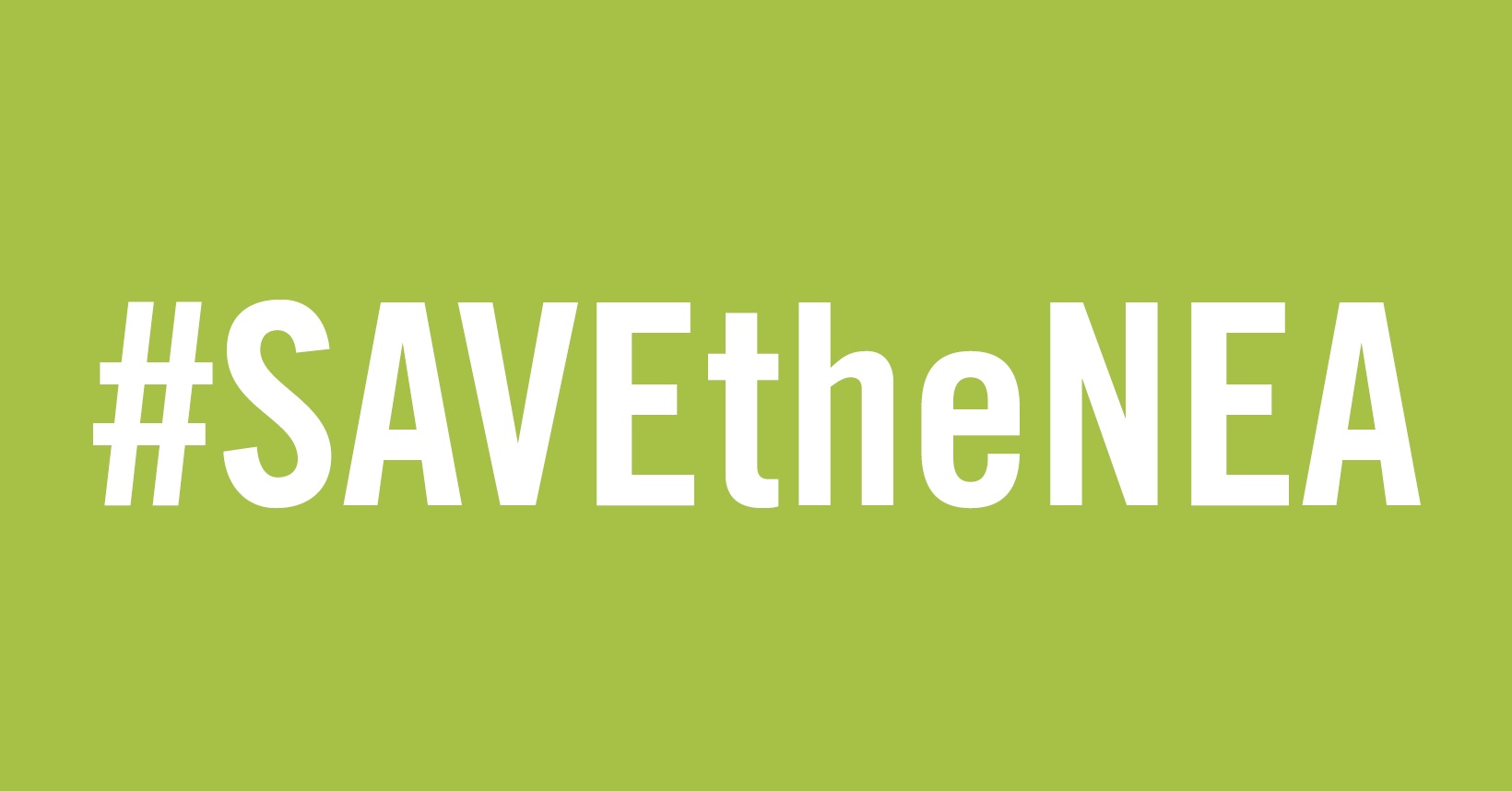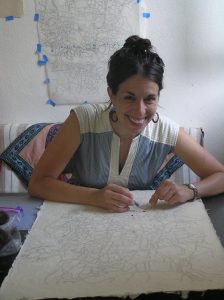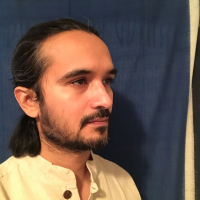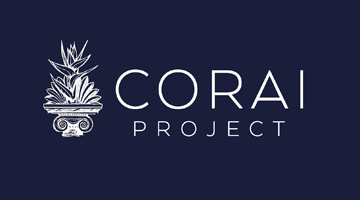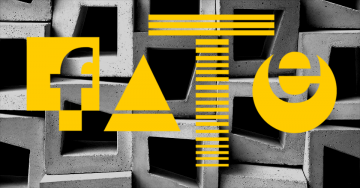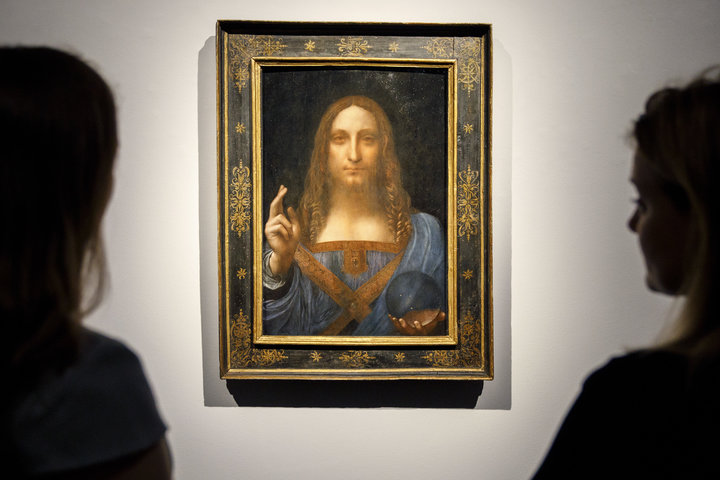CAA News Today
CAA Statement on the 2019 White House Budget Proposal
posted by CAA — Feb 12, 2018
Earlier this afternoon, the White House released its 2019 Budget Proposal. The $4.4 trillion budget outlines deep cuts in domestic programs that fund education, arts, and humanities initiatives, while increasing military spending.
“By zeroing out the budgets for the NEH, NEA and similar agencies that support the arts, humanities and education, the President has shown again that he cares more about tax cuts for the wealthy than supporting an American cultural heritage, funded though these agencies,” said Hunter O’Hanian, CAA’s executive director. “Thankfully, a bipartisan group of Congressional members, those with the real financial authority, have Americans interests at heart and they will reject the President’s draconian proposals.”
The entire budget proposal adds $984 billion to the federal deficit in the next year and in total adds $7 trillion to the deficit over the next 10 years.
Partial list of programs slated for elimination:
- NEA
- NEH
- IMLS
- CPB
- Corporation for Travel Promotion (Brand USA)
- Delta Regional Authority
- Denali Commission
- Northern Border Regional Commission
- Woodrow Wilson Center
- S. Interagency Council on Homelessness
- S. Trade and Development Agency
- Chemical Safety and Hazard Inspection Board
- Under SNAP: “Proposals are also included to eliminate funding for State performance bonuses and for SNAP nutrition education grants…”
- Economic Development Administration
- Contingency Fund
We call on our members and those who believe in the importance of the arts, humanities, and education to act now. The most effective way to make your voice heard is through your local representatives. Call. Email. Write letters.
Congress has this budget in their hands and now is the time to let them know you support the programs it seeks to eliminate.
Click here to access the CAA Arts and Humanities Advocacy Toolkit.
We look forward to discussing budget advocacy at our Annual Conference in Los Angeles, February 21-24.
Read about Advocacy News from CAA.
CWA Picks for February 2018
posted by CAA — Feb 08, 2018
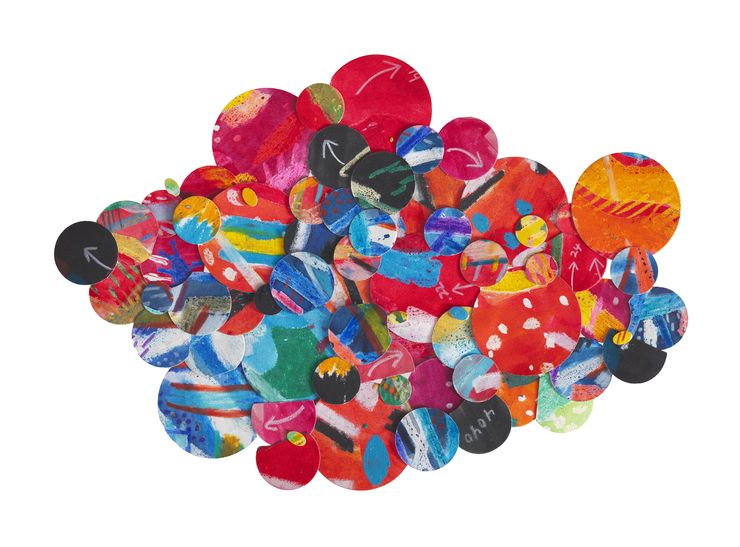
Howardena Pindell, Untitled #4D, 2009. Mixed media on paper collage; 7 × 10 in. Courtesy of the artist and Garth Greenan Gallery, New York.
CAA’s Committee on Women in the Arts selects the best in feminist art and scholarship to share with CAA members on a monthly basis. See February’s picks below.
Soul of a Nation
February 3–April 23, 2018
Crystal Bridges Museum of American Art
600 Museum Way
Bentonville AR, 72712
In this exhibition featuring the work of 60 artists, Soul of Nation, brings together painting, sculpture, photography, and more in an exhibition of “era-defining artworks that changed the face of art in American.”
The exhibition originated at the Tate Modern in London and will debut in the United States at Crystal Bridges. Artists Alice Neal, Faith Ringgold, Betye Saar, Ming Smith, Alma Thomas are joined by Romare Bearden, Barkley Hendricks, Noa Purifoy, Martin Puryear, and William T. Williams, among many others.
With over 150 works spanning 1963-1983 the exhibition explores a time when “Black Art” was being defined and debated across the country in vibrant paintings, photographs, prints and sculptures.”
Crystal Bridges is one of only two United States venues to host this important exhibition, described as both powerful, and at times, challenging. Following its debut in Bentonville, the exhibition travels to the Brooklyn Museum in New York.
On starting another conversation about comparative feminism
December 2, 2017–April 2018
WhyWhyArt Art Center
Nanjing City, Pukou District
Zijin Special Creative Zone
88 Pubin RD, 2F
In the exhibition On starting another conversation about comparative feminism at WhyWhyArt, 17 artists from China and internationally “explore the nature of comparative feminism, the existence of differing perceptions and trajectories of feminist identification that coexist as a result of a world that is globally connected, yet widely disparate regarding other influential factors, such as social mobility and economic development.”
Artists include: Abby Robinson (USA), Alexandre Ouairy (France), Daniele Mattioli (Italy), Guanyi Ming (China), Hazal Firat (Turkey), Inga Bruvere (Latvia), Island6 Arts Collective (International), MATE (China), Monika Lin (USA), Panos Dimitropoulos (Greece), Steven An (China), Susanne Junker (France), Cao Tongliang (China), Virginie Lerouge Knight (France), WeAre (International), Zane Mellupe-Goutard (LV/FRA), and Zhu Ye (China).
Hazel Meyer: Muscle Panic objects
January 26, 2018—March 10, 2018
Art League Houston
1953 Montrose Blvd.
Houston, TX 77006
Toronto-based performance and installation artist Hazel Meyer has been exploring the intersection of sports and gender since 2001 (with her bombastic Unnecessary Roughness—an audio-intestinal sports opera), and this exhibition represents the latest iteration of the artist’s locker room shenanigans. For opening night, Meyer, and a group of “local women, trans, and/or non-binary artists, athletes and activists” will end a five kilometer run to the gallery, depositing their sweaty garments in and amongst an immersive installation.
From the press release: “Leading the viewer through the space, the works offer an extended consideration regarding the performative nature of the athletic as it intersects with queerness. The exhibition instigates an arena of sweat and queer desire, evoking the imagery of momentous sports history, the bodily gestures and actions of a drill or warm-up and the aesthetics of the gymnasium. Simultaneously an installation and a performance, the exhibition transforms the banal and austere white cube into a hot physically charged site for emotional and physical exchange.”
Howardena Pindell: What Remains to Be Seen
February 24, 2018—May 20, 2018
Museum of Contemporary Art
220 E Chicago Ave
Chicago, IL 60611
For over fifty years Howardena Pindell has been pressurizing process and politics in her wide-ranging work. Best known, perhaps, for her video Free, White, and 21 (1980) in which the artist performs the daily racial aggressions she experienced as a person of color working in the artworld, all while wrapping her head in gauze, Pindell’s output also encompasses painting, collage, print-making, and photography. Throughout her career Pindell has explored the possibilities of abstraction, often collaging tiny pieces of paper (hole punches) onto fields of subtly undulating color, and sometimes adding perfume or talcum powder, engaging a viewer’s olfactory sense alongside the visual. The exhibition includes work from the past two years—large biomorphically-shaped canvases in bright, bold colors, evoking snails, whirlpools, and galaxies.
Victoria Gitman: Taktisch
January 11, 2018—February 17, 2018-01-23
Garth Greenan Gallery
545 W. 20th Street
New York, NY 10011
From the exhibition’s press release:
“The exhibition focuses on Gitman’s recent paintings—meticulously rendered abstractions based on the supple fur surfaces of vintage handbags. Gitman works in oils, hair by hair, creating surfaces that are delicately painted from close, direct observation. Many of the paintings feature abstract patterns evocative of early and mid-twentieth-century stylistic traditions. Evoking modernist compositional techniques, Gitman’s new works are resolutely frontal, their imagery extending edge-to-edge. Each composition is tightly cropped, further intensifying both the haptic quality and the inherent sensuousness of the artist’s chosen subjects.
“The title of the exhibition is a neologism introduced by Vienna School art historian Aloïs Riegl to describe a kind of close-up perception or “visual touching.” Taktisch can at once signify “tactile,” “tangible,” “palpable,” or “textural,” as well as “tactical.” It implies an intimate exchange with art objects, an intermingling of the experiences of seeing, feeling, and knowing through sensory perception.”
Kentucky Foundation for Women Artist Enrichment Grant
2017 Winners
With grants totaling $105,000 the Kentucky Foundation for Women has awarded 32 artists and arts organizations in the state enrichment grants, allowing them to “further their own artistic development while creating art for positive social change throughout the state.” Artistic mediums include photography, book projects, painting, sculpture, films, performances, and poetry among others.
Individual grants range from $1,000 to $7,500, and include assisting an artist with class fees to further her metal-working skills and “help normalize welding as an art form practiced by women,” to funding an independent film to increase the “acceptance of lesbians and all women who love women romantically.
“The foundation is pleased to support the work of these talented artists. Their projects show a commitment to expanding the scope of feminist art in Kentucky, through their innovative approaches and thought-provoking subject matter,” said Judi Jennings, director of the Foundation for Women. Read more here.
The artists include: Sylvia Ahrens (Lexington), Leslie Anglin (Louisville), Carrie Billett (Harlan), Tasha Cotter (Lexington), Shannon Davis-Roberts (Murray), Rachel Grimes (Milton), Vanessa Grossl (Lexington), Aaisha Hamid (Louisville), Julie Hensley (Richmond), DaMaris B. Hill (Lexington), Jenny Hobson (Berea), Rebecca Gayle Howell(Hindman), Trish Lindsey Jaggers (Smiths Grove), Karen Jones (Lexington), Karen Lanier of KALA Creative (Lexington), Amira Karaoud (Louisville), Lori Larusso (Lexington), Jaqui Linder (Versailles), Looking for Lilith Theatre Company (Louisville), George Ella Lyon (Lexington), Kristen Renee Miller (Louisville), Marie Mitchell (Richmond), Mary K. Morgan (Chappell), Jill Robertson (Hazard), Savannah Sipple (Lexington), Rainbow Star (Berea), Jamey Temple (Williamsburg), The Local Honeys (Linda Jean Stokley & Montana Hobbs) (Versailles), Tanya Torp (Lexington), Tucky Williams (Lexington), Lindsey Windland and Meg Wilson (Berea), and Whitney Withington (Big Hill).
Recipients of the 2017 Professional Development Fellowships
posted by CAA — Jan 29, 2018
CAA has awarded two 2017 Professional Development Fellowships—one in art history and one in visual art—to graduate students in MFA and PhD programs across the United States. In addition, CAA has named one honorable mention in art history and one in visual art. The fellows and honorable mentions both receive a complimentary one-year CAA membership and free registration for the 2018 Annual Conference in Los Angeles.
The recipient of the $10,000 fellowship in art history is Sooran Choi, a PhD candidate in Art History at CUNY Graduate Center. Accepting the $10,000 fellowship in visual art is Brenna K. Murphy, a MFA candidate in Studio Art at the University of Michigan Stamps School of Art & Design.
The honorable mention for art history goes to Murad Khan Mumtaz, a PhD candidate in the Department of Art and Architectural History at the University of Virginia. The recipient of an honorable mention in visual art is Courtney N. Ryan, a MFA candidate in Ceramics and Sculpture at Georgia Southern University.
Suzanne Preston Blier, president of the CAA Board of Directors, will formally recognize the two fellows and two honorable mentions at the 106th Annual Conference during Convocation, taking place on Wednesday, February 21, 2018, at the Los Angeles Convention Center.
CAA’s fellowship program supports promising artists and art historians who are enrolled in MFA and PhD programs nationwide. Awards are intended to help them with various aspects of their work, whether for job-search expenses or purchasing materials for the studio. CAA believes a grant of this kind, without contingencies, can best facilitate the transition between graduate studies and professional careers. The program is open to all eligible graduate students in the visual arts and art history. Applications for the 2019 fellowship cycle will open in the late spring.
FELLOW IN ART HISTORY
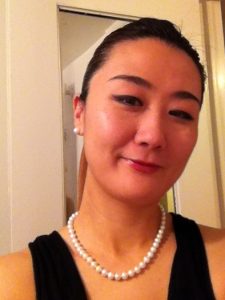 Sooran Choi
Sooran Choi
Sooran Choi will complete her PhD in Art History at The Graduate Center, City University of New York, in summer 2018. Her dissertation The South Korean “Avant-Garde,” 1967-1992: Subterfuge as Radical Agency concerns the South Korean avant-garde under Cold War military dictatorships from 1967 to 1992, and focuses on the social and political tension between the military dictatorships and the opposition of political dissidents comprised mostly of artists, students, and intellectuals, who defined themselves as “avant-garde artists.” By examining various forms of performative and conceptual art along with the recontextualized rhetoric of the avant-garde in South Korea, Choi argues South Korean artists appropriated and repurposed various Euro-American post-WWII avant-garde practices such as Fluxus, Happenings, Conceptualism, and Environmental art to mask their social and political critique to evade censorship and torture by the military juntas. A re-purposed avant-garde as covert political agency, Choi contends, proved useful for the South Korean artists to further their own social and political ends, and requires a renewed and nuanced interpretation of non-Western art historical trajectories beyond the binary of center/periphery model, and expands the existing discourse on the avant-garde.
Choi has received a Center for Place, Culture and Politics Dissertation Fellowship, and research grants from The Academy of Korean Studies, and the City University of New York. Choi’s scholarly interest in diverse art historical trajectories has carried over into her teaching as an Adjunct Lecturer at the City University of New York and the Fashion Institute of Technology (SUNY) where she teaches art history. Her past writing included topics such as East Asian artists in diaspora, alternative art spaces in South Korea, Gwangju Biennials, the Korean War Memorial in Battery Park (NYC), Japanese students at the Bauhaus, and the eroticism of Japanese Shunga art.
FELLOW IN VISUAL ART
Brenna K. Murphy
Brenna K. Murphy explores the experience of loss and its relationship to the body using fiber-based techniques such as weaving, embroidery, and lace-making. She holds a B.F.A. from the University of North Carolina – Chapel Hill where she graduated with Highest Honors and was the recipient of the Alexander Julian Prize, an award for the Department of Art’s “best students making work with a high standard of design,” and is currently pursuing an M.F.A. from the University of Michigan Stamps School of Art & Design.
A working artist for many years, Brenna has exhibited widely throughout the U.S. and internationally in China, Nepal, and France in community art centers, commercial galleries, and corporate venues. Her work has also been featured in exhibitions at museums and universities such as the Hunter Museum of American Art in Tennessee, the Patan Museum in Kathmandu, the University of Pennsylvania, Moore College of Art & Design, and the Tyler School of Art at Temple University. She has taught courses, led workshops, and given lectures at venues such as the Kathmandu University Center for Art & Design, the Nepal Art Council, and the Tyler School of Art, and her work has been collected by the Henry-Copeland Permanent Art Collection at the University of North Carolina and the prestigious West Collection. She is the recipient of many awards, including a competitive two-year fellowship from the Center for Emerging Visual Artists and the Fleisher Art Memorial Wind Challenge Award in Philadelphia, and has attended several artist residencies, such as the Santa Fe Arts Institute in New Mexico, the Kathmandu Contemporary Arts Centre in Nepal, and the CAMAC Centre d’Art and Cité Internationale des Arts in France.
HONORABLE MENTIONS IN ART HISTORY AND VISUAL ART
Murad Khan Mumtaz
Murad Khan Mumtaz is a Pakistani-American scholar who examines historical intersections of art, literature and religious expression in South Asia. His primary research focuses on devotional portraiture with a special interest in representations of Muslim saints in early modern India. He is also an artist trained in the traditional practices of North Indian painting, which he exhibits, researches and teaches internationally.
A native of Lahore, Mumtaz was educated at Pakistan’s National College of Arts, where he first studied Indian painting under the guidance of Ustad Bashir Ahmed. He later completed an MFA in visual art as a Fulbright Scholar at Columbia University. He is currently a doctoral candidate in the Department of Art and Architectural History at the University of Virginia and is working toward the completion of his dissertation, “Objects of Devotion: Representations of Muslim Saints in Early Modern South Asian Painting,” which he expects to defend in April 2018.
Mumtaz has been awarded fellowships from the American Institute of Indian Studies, the American Institute of Pakistan Studies and the CLIR-Mellon Program for dissertation research in original sources. As a Theodore Rousseau Fellow of the Metropolitan Museum of Art he has carried out research in European museums and libraries. He was recently appointed an art history research fellow of the Freer-Sackler Galleries at the Smithsonian Institution in Washington, DC.
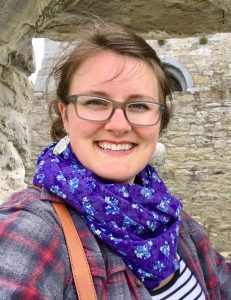 Courtney N. Ryan
Courtney N. Ryan
Receiving her Master of Fine Arts in Ceramics and Sculpture this May, Courtney Ryan is known for her intricate clay sculptures that appear to have emerged organically from their surroundings. She currently resides in Statesboro, Georgia, near Savannah, where she teaches Two-Dimensional and Three-Dimensional design courses as an Instructor of Record at Georgia Southern University. Upon graduation, Courtney intends to continue her studio practice while exhibiting work as she searches for her future career. As an aspiring professor of art, she wants to continue teaching and remain involved within the art world both professionally and academically.
Over the course of her graduate career, Courtney has had the opportunity to travel abroad to experience the Venice Biennale, as well as spend two summers in Ireland on residency through the European Council. As an avid presenter, Courtney has participated in conferences such as SECAC, SLSA, and of course CAA. Last August, she had her first solo exhibition, Domestic Consumption, at Columbus State University, and has since shown her work at other universities including the University of Georgia, Georgia State University, and Augusta University. Featured in Sculpture Magazine as an Honorable Mention for the 2017 Outstanding Student Achievement Award, Courtney continues to push her work into new realms. Currently she is exhibiting in The Delaware Contemporary Museum’s 2017 MFA Biennale: Domestic, as well as an upcoming show-swap with Aalto University in Helsinki, Finland. Having just completed a 40-foot mural and a public arts sculpture, Courtney is also heavily involved in her local community.
An Interview with Andrea Iaroc, Founder and Executive Director of the CORAI Project
posted by CAA — Jan 18, 2018
Andrea Iaroc created the CORAI Project to help art historians, in particular those without the privileges to access professional networks and generous financial resources. For more than ten years, her passion for historical research, teaching, writing, and philanthropy have advanced her work in museums and other art institutions, and forwarded her understanding of non-profits and intentional community work. An iconographer at heart, her current independent research interests focus on cultural hybridity and identity art.
Joelle Te Paske, CAA media and content manager, spoke with Andrea to learn more about the work CORAI is doing, her thoughts on CAA, and fundraising for inclusive art history.
This interview has been edited for length and clarity.
Andrea Iaroc: I’ve been a member of CAA since 2007. I see the way the organization has moved in the past years—it’s definitely a different direction.
Joelle Te Paske: Most definitely. That’s part of the reason why I’m here, too.
AI: It used to be a little bit more traditional. That’s one of the things I’m focused on—moving art history away from that traditional foundation, [which is] very ivory tower. It’s exclusive and I wanted to change that in founding the CORAI Project.
It was frustrating as a woman of color—but, I admit that I do have privilege. I don’t have college debt, but I saw friends in school sometimes struggle with simple things, such as professors asking us to go to a gallery, or buy a membership to CAA for instance. The question was always: “Okay, do I use this money to pay for my books for this class, or do I …?” It was this thought in the back of my head, and those things happen because art history has been a “girls with the pearls” academic field. We still have that image problem.
JTP: Yes. That’s the stereotype.
AI: When you’re trying to do fundraising for art history, a lot of people ask: “What exactly are you doing, are you going to save the world?” It’s not a practical STEM field, but we need to equalize it in reflection of current sociocultural changes. We need to amplify the voices that have not been heard because of European ethnocentrism and patriarchy. The way that we experience the world, the way we grow up, our background—all inform the way we interpret things. That is important for me.
In August 2016, I finally managed to realize the idea of creating something new [the CORAI Project]—getting a logo, a mission, values, and building up a board. We’re just over a year old. CORAI stands for Creating Opportunities for Representing Art History Inclusively. Our logo features a heliconia plant, a South American Heliconia Bihai (even though I was born in Brooklyn, NY my parents are Colombian). The foundation of the logo is very Greco-Roman, but the heliconia is breaking through that ionic capital, moving up and breaking through. Our logo is pretty much what we want to do.

From the CORAI website: The Greek Ionic order is studied in every art history 101 class. It is part of classic architecture and, to this day, is used in governmental and certain religious buildings. It very much represents the Western roots of the field, as well as the palm that opens up on the background. Both Romans and Greeks were fond of foliage to adorn their capitals. In the middle, however, is a South American heliconia shooting upwards – transcending the heavy and old marble foundation. Design by Bella Hall.
JTP: I love that.
AI: Yes, it’s time to break through and do different things. [CORAI Project] gives away springboard grants, small grants to give a little ‘push’, to art historians who identify as PoC, people of color, in the state of Washington. So far, our first grantee back in the spring of 2017 used her money to go to the Rubin Museum of Art so that she could use their collections to complete her thesis.
JTP: That’s terrific.
AI: She was studying thangka paintings of Tibet [Tibetan painting using ground mineral pigment on cotton or silk]. She was the only person in the University of Washington, Seattle, doing this which therefore will change the records of art history in the university because she’s only one of two students this year that are graduating with a focus on Chinese art history.
The person that received the grant in fall 2017 is going to invest it in Japanese translation to ensure her thesis is correct. Although she’s faced resistance to her art historical Japanese art focus, she’s following through. One of the things that happens is that professors who do not have experience in what they call “non-western” arts, question PoC’s methodologies, settings, and interpretations because a traditional art history is the only thing they know. You need to do what you want to do.
That’s what this is about, and it’s small. But we’re out there and hopefully we can inspire other art history organizations to break the mold.
JTP: That is wonderful work. What would you say is the most exciting part for you personally?
AI: The moment the grants are given away. I see their motivation and enthusiasm for what they want to do in school or independently to shake things up in art history. That’s the best part.
JTP: Yes, you see the changes they’re putting in place.
AI: Exactly, because it gives results. It’s something solid. If the only thing I do in this life is to change one person’s take on art history, which is also my career, then so be it. So far we’ve helped a couple of them.
JTP: I’m with you. It’s definitely slow, but it’s exciting to see those changes happen.
I’m curious, have you heard about the recent Ford Foundation and Walton Foundation initiative?
AI: Yes, I read about it.
JTP: What do you think about it?
AI: I thought that CAA made an interesting question [on Facebook] at the end, like, “Do you think it’s a little too late?”
JTP: That was me [laughs]. Six million dollars is a lot of money, but spread over 20 organizations over three years…
AI: Exactly. That’s one of the things that I struggle with—I mean we’re a community organization—and I have been told by several people, “Oh, just talk to so-and-so, they’ll give you the money.” But the problem is, they’re very powerful and they want to jump on the bandwagon of “diversity and inclusion” and so their name is going to be attached to this project, but do they really mean it? What have they done that maybe goes against the integrity of who I am and what my organization is? This is the case when big organizations move the right way, but what does that mean? For instance, does that mean that they’re going to get Walmart to diversify?
JTP: Or let their workers unionize?
AI: Right, exactly.
JTP: A friend of mine online made the point of: we’re looking at how to get women and people of color and LGBTQ folks into leadership positions—we’re not talking internships.
AI: It’s good that people are a little bit more critical about these things because to [the Walton family] six million, it’s really nothing. What is this really about?
JTP: Yes, and I think it can be both good and bad. But asking the question is really important.
AI: Exactly.
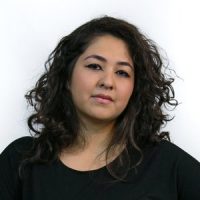
Andrea Iaroc. Courtesy CORAI Project.
JTP: Have you attended CAA conferences in the past? What did you think?
AI: Yes. In 2012 I attended the 100th conference in Los Angeles. It was a big deal.
Back then, I was just coming out of five years of research for my thesis on Jewish art, specifically iconography. I looked for a relevant session and when I went, the organizer said it had taken them 16 years to get CAA to have a session on Jewish art. That it took them 16 years was disappointing, but there we were.
There were talks already of having another Jewish session in 2013 and now I can see that things have changed. The way that the conferences look now five years later is different.
Back then I went to a Pre-Columbian session where you had all these folks who, yes, of course, are excellent at their research profession and uphold conservation and believe in the return of a lot of these items to their countries. But at the same time I felt, “Really, you couldn’t find one Latin American professor that could talk about this? Just one?” You have all these folks that are white American and Canadian and they’re telling you about your heritage—it feels really strange.
When you look at [the conference sessions] now, the layout in terms of the list of people who are talking and where they come from and the sessions—it’s much better.
JTP: That’s good to know. I’ve been involved with the organization for less time than a lot of its members, including you, so I’m always curious to ask people. I think energy apart from the conference is also really important, making sure that people feel supported not just when they’re in one place together.
AI: Exactly.
JTP: Do you have suggestions for organizations besides CORAI that people should be following?
AI: There’s Art History That. It’s run by two women (Karen J. Leader and Amy K. Hamlin) and sometimes they post their own writings. They gave us our first Facebook shout out for our first grant. They’re very supportive about anything that’s changing in art history, the paradigms, the way that we even talk about women sometimes. In 2017 when you go to an Art History 101 class, women are still muses, but we’re not the artists. We’re still not taken into account as having a genius, especially when we’re talking about classics. The way that we talk—that language needs to be changed.
There’s also Smarthistory. They are from New York and they offer free resources for art history.
Material Collective, you may have heard of it because it’s connected to Art History Teaching Resources. They’re both connected and even have this big group of medievalists who are trying to fight the white supremacist narrative.
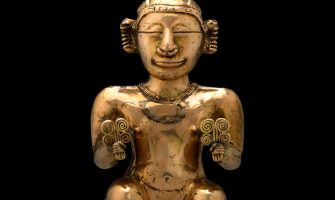
A piece featured in Smarthistory’s “South America before European colonization” section. Hands up close (detail), Seated Female Poporo, c. 500 B.C.E. – 700 C.E. Early Quimbaya, tumbaga (gold alloy), Colombia © The Trustees of the British Museum. Courtesy Smarthistory.
JTP: Excellent, thanks! What is the focus of your own research? You’ve mentioned it, but just to reiterate.
AI: Jewish art and iconography was my original focus, but because of it I’ve switched to cultural hybridity art.
JTP: Oh, interesting.
AI: Cultural hybridity includes artists who, because of the way our world has different heritages, draw inspiration from their mixed background. For instance, I had been researching contemporary Jewish artists and I ran across a work from Maya Escobar, who is from Missouri. Her dad is from Guatemala, he’s of Mayan ancestry, and her mom is Jewish, Ashkenazi, and so she made a tallit, a Jewish prayer shawl, using Mayan weaving techniques. That fusion of tradition—I’m very interested in it.
JTP: Do you think artists and art historians can change the world?
AI: Because I think that everything is connected, I always say art history does not exist in a vacuum.
JTP: I agree.
AI: Everything that’s happening scientifically, economically—it’s reflected. You’re going to see it in 50 years when you look back at art, you’re going to see it. Can it change the world? It can help change the world because humanities play a crucial role. The humanities help you see the world in a different way. They help your critical thinking skills and help you read humans. It helps you build community.
Write to CORAI Project at info@coraiproject.org
Affiliated Society News for January 2018
posted by CAA — Jan 16, 2018
Affiliated Society News shares the new and exciting things CAA’s affiliated organizations are working on including activities, awards, publications, conferences, and exhibitions. For more information on Affiliated Societies, click here.
Association of Academic Museums and Galleries
We hope to release 2018 Annual Conference registration, hotel and lodging information, and scholarship applications within the next month. Stay tuned for announcements via membership emails, the website, social media, and the AAMG listserv!
In the meantime, save the date!
June 21 – 24, 2018
Lowe Art Museum (University of Miami)
SECAC
SECAC 2017: 73rd ANNUAL CONFERENCE:
In October, SECAC met for the 73rd time in Columbus, Ohio, hosted by the Columbus College of Art and Design. One hundred and seven sessions were held, and 502 members representing 277 institutions attended. In its seventh year, participation in the SECAC mentoring program nearly doubled with 50 members meeting as mentors and mentees. Highlights of the conference included the SECAC 2017 Annual Juried Exhibition at CCAD’s Beeler Gallery and a keynote address at the Columbus Museum of Art by Tyree Guyton and Jenenne Whitfield of the Heidelberg Project.
At the annual business meeting SECAC President Jason Guynes of the University of Alabama introduced new members of the Board of Directors: Georgia, Jeff Schmuki, Georgia Southern University; South Carolina, Sarah Archino, Furman University; Virginia, Jennifer Anderson, Hollins University; West Virginia, Heather Stark (continuing), Marshall University; and At Large #2 Al Denyer (continuing), University of Utah. A. Lawrence Jenkens of the University of North Carolina at Greensboro was unanimously elected 1st Vice President of SECAC, a post he will hold for three years before becoming President. A Constitutional Amendment to add a third At-Large position to the SECAC Board was carried unanimously. At the end of the meeting, President Guynes passed the gavel to 1st Vice President and President-Elect Sandra J. Reed of Marshall University who will serve as SECAC President for three years.
SECAC 2018 will be hosted by the University of Alabama at Birmingham, October 17-20. A call for session proposals is now on the SECAC website, www.secacart.org. Calls for presentations, juried exhibition entries, and award nominations will be published on the website in early 2018.
AWARDS PRESENTED AT SECAC 2017
The SECAC Artist’s Fellowship, a $5,000 prize, was awarded to Stacey M. Holloway, Assistant Professor of Sculpture at the University of Alabama at Birmingham. Her proposed exhibition, Not to Be Otherwise, will be on view at SECAC 2018 in Birmingham, Alabama.
Ashley Elston, Assistant Professor of Art History, Berea College, won the fourth annual William R. Levin Award, a $5,000 prize, for her project Layered Media in the Sacred Art of Early Modern Italy.
The 2017 SECAC Award for Excellence in Teaching was awarded to Beauvais Lyons, Professor of Art at the University of Wisconsin-Green Bay.
The 2017 SECAC Award for Excellence in Scholarly Research and Publication was awarded to Christine Filippone, Associate Professor in Art History at Millersville University of Pennsylvania, for Science, Technology, and Utopias: Women Artists and Cold War America, Routledge Press, 2017.
The Awards Committee recognized two winners of the 2017 SECAC Award for Outstanding Artistic Achievement: Reni Gower, Professor in the Painting and Printmaking Department at Virginia Commonwealth University, and Carol Prusa, Professor of Painting and Drawing at Florida Atlantic University.
The 2017 SECAC Award for Outstanding Professional Achievement in Graphic Design was awarded to Meaghan Dee, Assistant Professor and Chair of Visual Communication Design at Virginia Tech.
The Awards Committee recognized two winners of the 2017 SECAC Award for Outstanding Exhibition and Catalogue of Historical Materials: the Georgia Museum of Art (University of Georgia) for Icon of Modernism: Representing the Brooklyn Bridge, 1883–1950, curated by Sarah Kate Gillespie; and Edward Irvine, Associate Professor of Art at the University of North Carolina Wilmington for Art From Flour: Barrel to Bag, at the Cameron Art Museum, Wilmington, North Carolina.
The 2017 SECAC Award for Outstanding Exhibition and Catalogue of Contemporary Materials was awarded to the Georgia Museum of Art (University of Georgia) for Paper in Profile: Mixografia and Taller de Gráfica Mexicana.
Nine graduate students received Gulnar Bosch Travel Awards in the amount of $220: Cyndy Epps, Georgia Southern University; Kimiko Matsumura, Rutgers University; Kathleen Pierce, Rutgers University; Daniel Ralston, Columbia University; Courtney N. Ryan, Georgia Southern University; Florencia San Martin, Rutgers University; William J. Simmons, University of Southern California; Madison Treece, University of California, Santa Cruz; and Angela Whitlock, Institute for Doctoral Studies in the Visual Arts.
Juror Tyler Cann, Curator of Contemporary Art at the Columbus Museum of Art, selected three prize winners for the SECAC 2017 Annual Juried Exhibition: Best in Show, Brooks Dierdorff, University of Central Florida, for What Else Do You Need?, Inkjet on vinyl mesh, stained glass, styrofoam coolers, 42” x 14” x 11”; Second Prize, Erica Mendoza, University of Tennessee Knoxville, for #WasterHerTim-2013to2017, Hand-embroidered ex-boyfriend clothing, approximately 91” x 63”; and Third Prize, Kofi Opoku, West Virginia University, for Face of Homelessness (Chuck), Video, 5’ 47”. Prizes were $1,500, $750, and $500, respectively.
The Art Libraries Society of North America (ARLIS/NA)
- The Art Libraries Society of North America (ARLIS/NA) is sponsoring a session the 2018 CAA conference in Los Angeles entitled “Engaging the Iterative: Pedagogical Experiments across Art and Design Disciplines.”
- The 46th Annual Conference of the Art Libraries Society of North America (ARLIS/NA) will be held in New York City at the New York Hilton Midtown from February 25 through March 1, 2018. This year’s conference, which is the preeminent event for the ARLIS/NA organization of art and visual information professionals, carries the theme Out of Bounds, and emphasizes sessions that expand the boundaries of art librarianship, featuring speakers who borrow ideas from outside the library profession to solve problems, spark new initiatives, or broaden audiences for library activities.
- In collaboration with the Art Libraries Society of North America (ARLIS/NA) the Sotheby’s Research Institute is once again sponsoring a research award for students writing on the subjects of art collecting or the art market http://www.sothebysinstitute.com/news-and-events/news/call-for-student-paper-submissions-arlis-award/ . This generous award of $3000 to the winner (individual or group effort) and $1000 to the assisting library will be presented at the 2018 ARLIS conference in New York.
Association for Critical Race Art History (ACRAH)
The Association for Critical Race Art History’s Bibliographic resource launched on January 9, 2017, and received over 1000 hits on the first day. In conjunction with the publication of the bibliography, reading groups were formed in the San Francisco Bay Area, Boston, New York, and Washington, D.C. to bring together art historians engaged with issues of the representation of race and ethnicity and their histories. To date, 42 people have participated in the reading groups, which have covered a wide array of topics including hybridity, empire, borders, primitivisms, and the contemporary status of identity politics. The reading groups were organized by Caitlin Beach (NY), Layla Bermeo (Boston), Margarita Karasoulas (Washington, D.C.), Marci Kwon (Bay Area), and Sean Nesselrode Moncada (NY). The organizers would like to thank Jacqueline Francis and Camara Dia Holloway, co-founders of the Association for Critical Race Art History, for their support and guidance in this endeavor.
Association for Latin American Art (ALAA)
The Association for Latin American Art (ALAA) is pleased to announce our Emerging Scholars of Latin American Art sponsored session at the upcoming College Art Association Conference. This session showcases the scholarship of graduate students and early career scholars of Latin American art, from the pre-Columbian to contemporary period. The session, chaired by Lisa Trever (UC-Berkeley) and Elena FitzPatrick Sifford (Louisiana State University), takes place on Thursday, February 22 from 10:30 am to 12:00 pm in room 402 and includes the following papers:
“Singular Plural: Serials, Rulership, and Time in the Architectural Ornament of Teotihuacan, Mexico” (Trent Barnes, Harvard University)
“‘These things do not exist’: Painting Grotesques in Sixteenth-Century New Spain” (Savannah Esquivel, University of Chicago)
“Migrant Constructions: Mahjar Monuments and the Crafting of Transnational Identities in Modern Argentina (1910–1955)” (Caroline “Olivia” M. Wolf, Rice University).
Renaissance Society of America
The Renaissance Society of America is holding its Annual Meeting in New Orleans on 22-24 March 2018. More than 200 of the 550 sessions at the conference feature topics relating to art and architecture, 1300-1700. See the RSA New Orleans web page for more information.
Historians of German, Scandinavian, and Central European Art and Architecture (HGSCEA)
The Board recently awarded travel stipends to two members of HGSCEA, Tomasz Grusiecki and Max Koss, to help defray the costs of their participation in CAA’s annual conference this coming February. The Board is also deliberating on the submissions to this year’s HGSCEA Emerging Scholars Prize competition. The winner will be announced at the reception and dinner in Los Angeles on Thursday, February 22, from 7 to 9 p.m. As always, the dinner is free to current members, who should mark their calendars if they plan to attend. An invitation with more details will be sent soon.
HGSCEA’s sponsored session at the annual conference, “Critical Race Art Histories in Germany, Scandinavia, and Central Europe,” is being chaired by Allison Morehead on Saturday, February 24, from 2:00-3:30 p.m. Rebecca Houze, Patricia Berman, Bart Pushaw, and Kristin Schroeder will read papers on Hungarian, Nordic, and German art and design. For more information, go to the HGSCEA website (http://hgscea.org/) and the conference website (http://conference.collegeart.org/programs/critical-race-art-histories-in-germany-scandinavia-and-central-europe/)
The annual business meeting is scheduled for Thursday, February 22. It will take place in Room 506 of the Convention Center from 12:30-1:30 p.m. Members are welcome to attend.
The New Media Caucus
The New Media Caucus is pleased to welcome our newly elected board members Rene Ferro (Chair of the Events and Exhibitions Committee), Jim Jeffers, (Treasurer), Jessye McDowell (Chair of the Communications Committee), Nadav Assor, Stephanie Tripp, Carrie Ida Edinger, Patrick Lichty, Jennifer Zayela, Byron Rich, Johanna Gosse and Liat Berdugo.
We also thank Bill Miller and Joyce Rudinsky for their years of invaluable leadership to our organization and Carlos Rosas, Meredith Hoy and Daniel Temkin for their service over the years as members of the Board.
As part of the Annual CAA conference, the New Media Caucus will be hosting multiple panels, workshops and our annual Member Showcase. You can find the New Media Caucus events information at http://www.newmediacaucus.org/2018-caa-los-angeles-events/.
National Council of Arts Administrators (NCAA)
National Council of Arts Administrators (NCAA) Activities at CAA-LA 2018 include our NCAA-CAA Affiliate Session: Transforming Communities Through the Arts, (Thursday, February 22, 10:30a.m.-12:00 p.m.) and the annual NCAA Reception (Thursday, February 22, 5–7 p.m., rm. tba). NCAA welcomes new and current members, and all interested parties. Please join us.
2018 NCAA Annual Conference: Purposeful Relationships: transforming communities through art and design, will be hosted by the Kendall College of Art and Design of Ferris University, Grand Rapids, MI, September 26-29, 2018. Registration available online in late spring 2018 at www.ncaaarts.org
New NCAA Board Members and Officers:
NCAA President: Lynne Allen, Boston University, Treasurer: Cathy Pagani, University of Alabama, Secretary: Peter Chametzky, University of South Carolina
New NCAA Board Members: Colin Blakely, University of Arizona, Jade Jewett, California State University, Fullerton, Charles Kanwishcher, Bowling Green State University
Historians of Netherlandish Art
HNA events at the College Art Association annual Conference, Los Angeles, February 21-24, 2018:
This year our HNA sponsored session, “All in the Family: Northern European Artistic Dynasties, CA. 1350-1750 will take place on Wednesday, February 21st, from 4-5:30 pm in Room 404A at the LA Convention Center.
Join us for the yearly HNA reception on Friday February 23rd, from 5:30-7 pm. in the San Bernadino Room at the Westin Bonaventure Hotel.
HNA Conference, Ghent, 2018
Registration is open for the quadrennial HNA conference in Ghent, May 23-26, 2018: https://hnanews.org/hna-conference-ghent-2018
We are pleased to announce 3 new board members:
Stephanie Porras, Assistant Professor at Tulane University
Marisa Bass, Assistant Professor and Director of Undergraduate Studies in the History of Art Department of Yale University
Freyda Spira, Associate Curator of Northern Renaissance and Baroque works on paper at the Metropolitan Museum of Art
and our new HNA Administrator:
Caroline Fowler, A.W. Mellon Postdoctoral Fellow, Yale University
Websites:
Don’t forget to check out our newly launched websites including HNAR, our online review of books, where past reviews will be available. The final print issue of the HNA Newsletter and Review of Books was published in November 2017. Issues produced since May 2002 are now available in pdf format on the site for viewing and download. Please take a look: https://hnanews.org, https://jhna.org, https://hnanews.org/hnar, and https://hnanews.org/hnar/archive.
Publication opportunity:
The next formal deadline for submission of articles to the Journal of Historians of Netherlandish Art (jhna.org) is March 1, 2018 (for publication in 2018 or 2019), although we welcome submissions at any time.
Society of Architectural Historians
Early registration is open for the Society of Architectural Historians’ 71st Annual International Conference in Saint Paul, Minnesota, April 18–22, 2018. Architectural and art historians, architects, museum professionals, and preservationists from around the world will convene at the Saint Paul RiverCentre to present new research on the history of the built environment and explore the architecture of Saint Paul. Roundtable discussions, workshops, networking receptions, keynote talks, SAH’s annual awards ceremony, and public architecture tours in the Minneapolis–Saint Paul region will supplement the program. Early registration ends February 20. Tours-only and public events registration opens on February 21. Visit www.sah.org/2018.
SAH is accepting session proposals for its 72nd Annual International Conference in Providence, Rhode Island, April 24–28, 2019. Since the principal purpose of the SAH annual conference is to inform attendees of the general state of research in architectural history and related disciplines, session proposals covering every time period and all aspects of the built environment, including landscape and urban history, are encouraged. SAH membership is not required to submit a proposal; however, you will be required to join SAH if your proposal is accepted. The submission deadline is January 16, 2018. Visit www.sah.org/2019.
SAH has partnered with the Global Architectural History Teaching Collaborative (GAHTC) to offer Research-to-Teaching Grants and Field Seminar Travel Grants. These new grants are part of the GAHTC’s nearly $500,000 in funding to build new content for its free, digital platform of teaching materials. Learn more at www.gahtc.org/grants.
European Postwar and Contemporary Art Forum (EPCAF)
A new group of counselors has joined EPCAF. Their bios, along with those of the new director of research and president are below. Karen Kurczynski’s review of the conference, “Multiple Modernisms: A Symposium on Globalism in Postwar Art,” was recently published at http://epcaf.org/reviews/
President:
Lily Woodruff is Assistant Professor of Art History at Michigan State University. Her first book, Disordering the Establishment: Participatory Art and Institutional Critique in France, 1958-1981 focuses on the Groupe de Recherche d’Art Visuel, Daniel Buren, André Cadere, and the Collectif d’Art Sociologique.
Director of Research:
Emmanuel Guy is Assistant Professor of Art and Design History at The New School, Parsons Paris. His book focuses on Guy Debord’s Game of War, and he curated among other exhibitions, “Guy Debord. Un Art de la Guerre” at the Bibliothèque nationale de France in 2013.
Counselors:
Amy Bryzgel is Senior Lecturer in Film and Visual Culture at the University of Aberdeen in Scotland. She is the author of Performance art in Eastern Europe since 1960, and Performing the East: Performance Art in Russia, Latvia and Poland Since 1980.
Brianne Cohen is Assistant Professor of Contemporary Art History at the University of Colorado, Boulder. Her book, Preventive Publics: Contemporary Art and the Idea of Europe, examines the art of Harun Farocki, Thomas Hirschhorn, and the collective Henry VIII’s Wives.
Liam Considine is Visiting Assistant Professor of art history at Pratt Institute. His book, New Realisms: Pop and Politics in France, 1962-1968, examines the impact of Pop art in France across painting, cinema and graphic design during the 1960s.
Sophie Cras is Maître de conférences at Université Paris 1 Panthéon-Sorbonne. An English translation of her book, L’économie à l’épreuve de l’art. Art et capitalisme dans les années 1960.
Deborah Laks is Scientific Coordinator at the Deutsches Forum für Kunstgeschichte, and teaches at the Panthéon-Sorbonne University, Sciences po, and École du Louvre. She is the author of Des déchets pour mémoire. L’utilisation de matériaux de récupération par les nouveaux réalistes (1955-1975).
Jasmina Tumbas is Assistant Professor in the Department of Art at the University at Buffalo. Her first book is titled The Erotics of Dictatorship: Art, Sex, and Politics under Yugoslav Socialism.
FATE (Foundations in Art: Theory and Education)
Upcoming for CAA 2018: An Inclusion and Empathy Roundtable discussion and podcasting session will be hosted during FATE’s Business Meeting at the conference: Th, Feb 22, 12:30 – 1:30p, Rm 402A, LA Convention Center.
02/22/2018: 6:00PM–7:30PM, Room 409A: “Let’s Dance, But Don’t Call Me Baby: Dialogue, Empathy, and Inclusion in the Classroom and Beyond”
FATE’s CAA Affiliate Representative, Naomi J. Falk, and Richard Moninski, will co-chair FATE’s Affiliated Society session. Feeling welcome, acknowledged, and heard encourages learning. Fostering inclusiveness and empathy on behalf of minority students legitimizes perspectives. Examples of readings, projects, tools, and exercises for building inclusive, encouraging, and productive dialogues included. More info? Please contact: Naomi J. Falk, naomijfalk@gmail.com
Feb 10, 2018: FATE Regional Event: Skill Swap Workshop @ SHSU, 10:00am – 5:00pm at Sam Houston State University, WASH (Workshop in Art Studio + History), 2220 Ave. M, Huntsville, TX, 77340. $20.00 covers breakfast, zine and demo materials, lunch, and takeaway information. Coordinators: Jessica Simorte & Valerie Powell, Register by Jan 10: jessicasimorte@hotmail.com
Other Regional events, incl. Apr 2018 in Columbus: http://www.foundations-art.org/regional-events
Positive Space podcast: http://www.foundations-art.org/positive-space-podcast
Episode 21, features Jessica Mongeon, Visiting Assistant Professor of Studio Foundations at Arkansas Tech University, discusses student habits, using technology in the classroom & strategies for creating inclusive learning environments at a time when social & political issues often alienate many. Unpacking trends in foundations pedagogy, Emily Ward Bivens, professor of Time-Based Art at the University of Tennessee, discuss the benefit of introducing students to performative activities, mentorship and the challenge/adventure involved in juggling the role of artist, educator, and administrator. Recent episodes also include Colby Jennings, Heather Szatmary, and Chung-Fan Chang.
Membership: Starting the 2018/2019 membership period, FATE has made changes to the Individual Membership fees including a new Adjunct Faculty Membership rate for part-time and contingent faculty members: http://www.foundations-art.org/membership
International Sculpture Center
The 2018 International Sculpture Conference will be held in Philadelphia, PA from October 25-28, 2018. The Call for Panels will open in January 2018. We will be seeking a diverse program with a wide range of topics in contemporary sculpture. For updates and to apply, visit www.sculpture.org/philly2018.
Tickets to the Lifetime Achievement Award Gala honoring Alice Aycock and Betye Saar are on sale. The gala will be held on April 18, 2018 at Tribeca Rooftop, NY, NY. For more information, and to purchase tickets visit www.sculpture.org/aycocksaar, or contact the ISC events department at events@sculpture.org.
Meet the Meiss Fund Recipients for Fall 2017
posted by CAA — Dec 22, 2017
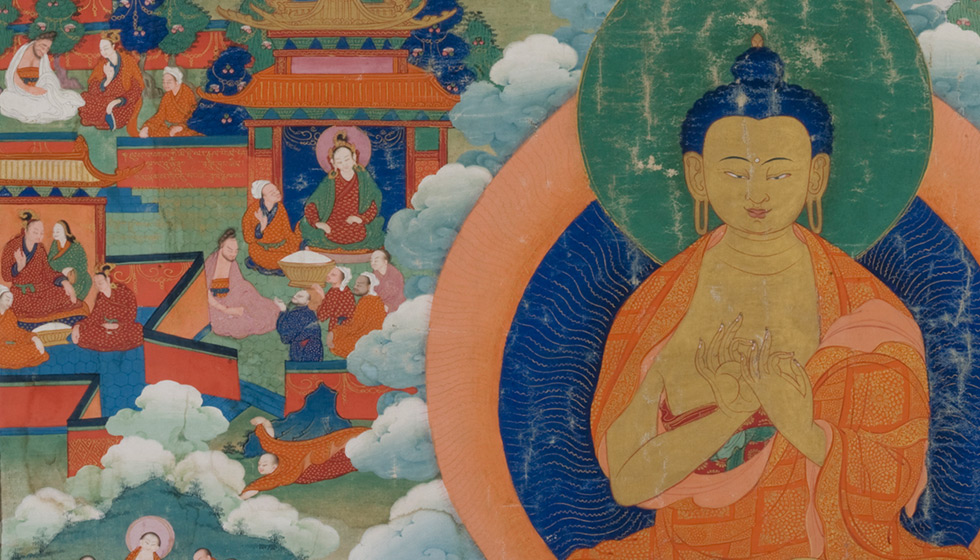
Eric Huntington’s Creating the Universe: Depictions of the Cosmos in Himalayan Buddhism is a Fall 2017 Meiss grantee. Image: The life of the Buddha (detail), 1700–1800. Tibet. Ink and colors on cotton. Courtesy Asian Art Museum.
MEET THE GRANTEES
Twice a year, CAA awards grants through the Millard Meiss Publication Fund to support book-length scholarly manuscripts in the history of art, visual studies, and related subjects that have been accepted by a publisher on their merits, but cannot be published in the most desirable form without a subsidy.
Thanks to the generous bequest of the late Prof. Millard Meiss, CAA began awarding these publishing grants in 1975.
The Millard Meiss Publication Fund grantees for Fall 2017 are:
- Cranston, Jodi, The Green Worlds of Renaissance Venice (Pennylvania State University Press)
- Drimmer, Sonja, The Art of Allusion: Illuminators and the Making of Middle English Literature, 1403-1476 (University of Pennsylvania Press)
- Gaziambide, Maria C., Retrograde Modernity: The Deliberate Anachronism of Venezuela’s El Techo de la Ballena (University Press Florida)
- Huntington, Eric, Creating the Universe: Depictions of the Cosmos in Himalayan Buddhism (University of Washington Press)
- Lakey, Christopher, Sculptural Seeing: Relief, Optics, and the Rise of Perspective in Medieval Italy (Yale University Press)
- Lerner, Jullian, Graphic Culture: Illustration and Artistic Enterprise in Paris, 1830-1848 (McGill-Queen’s University Press)
- O’Neal, Halle, Word Embodied: The Jeweled Pagoda Mandalas in Japanese Buddhist Art (Harvard University Press)
- Romberg, Kristin, Gan’s Constructivism: Aesthetic Theory for an Embedded Modernism (University of California Press)
- Sturgeon, Justin, Text and Image in Rene d’Anjou’s Livre des tournois, c. 1460: Constructing Authority and Identity in Fifteenth Century Court Culture (Boydell & Brewer)
Read a list of all recipients of the Millard Meiss Publication Fund from 1975 to the present. The list is alphabetized by author’s last name and includes book titles and publishers.
BACKGROUND
Books eligible for a Meiss grant must currently be under contract with a publisher and be on a subject in the arts or art history. The deadlines for the receipt of applications are March 15 and September 15 of each year. Please review the Application Guidelines and the Application Process, Schedule, and Checklist for complete instructions.
CONTACT
Questions? Please contact Aakash Suchak, CAA grants and special programs manager, at 212-392-4435.
Meet the 2017 Wyeth Award Winners
posted by CAA — Dec 19, 2017
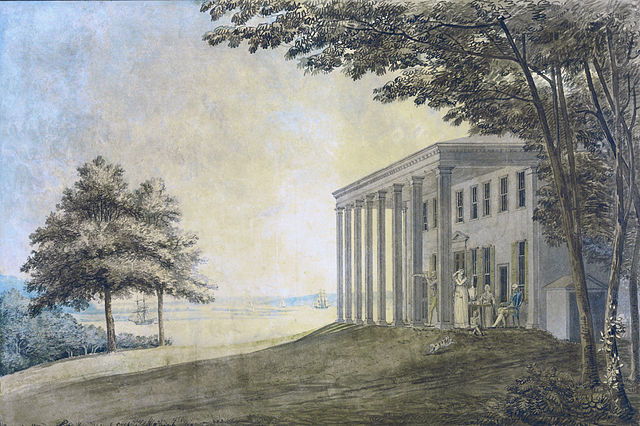
Benjamin Henry Latrobe, A view on Mount Vernon with the Washington family on the terrace, 1796, watercolor, pen and ink on paper, 16 3/8 x 24 inches. Image: Wikimedia Commons
Meet the Grantees
Since 2005, the Wyeth Foundation for American Art has supported the publication of books on American art through the Wyeth Foundation for American Art Publication Grant, administered by CAA. The 2017 grantees are:
- Fryd, Vivian, “Against Our Will”: Representing Sexual Trauma in American Art, 1970–2014 (Penn State University Press)
- Moore, Emily, For Future Generations: Tlingit, Haida, and American Art in Alaska’s New Deal Totem Parks (University of Washington Press)
- Naeem, Asma, Out of Earshot: Sound and Technology in American Art, 1850–1900 (University of California Press)
- Sienkewicz, Julia, Epic Landscapes, Benjamin Latrobe and the Art of Watercolor (University of Delaware Press)
- Weyl, Christina, The Women of Atelier 17: Craft, Creativity, and Modernist Printmaking (Yale University Press)
Read a list of all recipients of the Wyeth Foundation for American Art Publication Grant from 2005 to the present.
BACKGROUND
For the Wyeth Foundation for American Art Publication Grant, “American art” is defined as art created in the United States, Canada, and Mexico. Eligible for the grant are book-length scholarly manuscripts in the history of American art, visual studies, and related subjects that have been accepted by a publisher on their merits but cannot be published in the most desirable form without a subsidy. The deadline for the receipt of applications is September 15 of each year.
Guidelines
Process, Materials, and Checklist
CONTACT
Questions? Please contact Aakash Suchak, CAA grants and special programs manager at 212-392-4435.
Associate Editor for Digital Publications
posted by CAA — Dec 08, 2017
Please note: This position has been filled. Thank you.
College Art Association
50 Broadway, Fl 21
New York, NY 10004
Date posted: December 6, 2017
Position Title: Associate Editor for Digital Publications
Supervisor: Director of Programs and Publications
Full-time, salaried with benefits
Founded in 1911, the College Art Association (CAA) is the preeminent international leadership organization in the visual arts, promoting the field through intellectual engagement, advocacy, programs, and a commitment to the diversity of practices and practitioners. Each year, CAA offers an Annual Conference, publishes two scholarly journals and offers a variety of other programs. Visit CollegeArt.org for a complete description of programs and offerings.
CAA has more than 9,000 members worldwide. The majority of members are curators, art historians, scholars, visual artists, and designers.
Responsibilities:
The Associate Editor for Digital Publications reports to the Director of Programs and Publications. The Associate Editor serves principally as production manager and copyeditor for Art Journal Open, assists in production of caa.reviews, and provides support for other digital publication projects.
The Associate Editor works closely and collaboratively with colleagues in all departments within CAA as well as with representatives from the Board of Directors, editorial boards, and Publications Committee, to establish priorities and to ensure the highest standards of publishing. The Associate Editor acts as the liaison for CAA publications to the association’s communications and marketing department; skills in social media and copywriting are essential.
Art Journal Open
- Responsibilities include, but are not limited to serving as production manager working closely with the Web Editor to produce essays and artists’ projects for the website.
- Creates and maintains production schedules, including deadlines for submissions, editing, proofreading, and publishing.
- Communicates regularly with the Director of Programs and Publications, Editorial Director, and Web Editor about the progress of web projects and texts.
- Reviews text, image, video, and other files submitted for publication; checks permissions submitted by authors; and obtains replacement files when necessary
- Copyedits, fact-checks, and proofreads manuscripts; manages editorial process for contributors
- Designs and implements layouts for all projects published
- Prepares manuscripts and images for upload
- Uploads and publishes all content
- Manages and maintains functionality and administrative aspects of the site including contracts, permissions, and payments
Programs and Publications Department
- Assists with maintenance of reviews website
- Works on multimedia projects for reviews using the Scalar platform
- Works with Publications and Programs Editor to upload and publish content on reviews on a weekly basis
- Works collaboratively with CAA’s communications, marketing, and membership department to promote content published across all CAA’s publications, including preparing marketing copy and strategizing; works with CAA’s Media and Content Manager on preparing content for social media
- Collaborates with Grants and Special Programs Manager on grant programs and applications
Required Qualifications:
- Bachelor’s degree, preferably in an art related field
- A minimum of 2 years experience in editorial production; a background or interest in contemporary art editing is a plus
- Working knowledge and experience with WordPress or working with another CMS system to publish online. Familiarity with PHP development is a plus
- Experience with HTML/CSS, Photoshop, Vimeo, and social media platforms including Instagram, Facebook, and Twitter
- Strong English-language and copyediting skills (Chicago Manual of Style)
- Excellent communication, organizational, and time-management skills
- Excellent attention to detail and interpersonal skills
- Demonstrated ability to understand production scheduled, meet deadlines and quality expectations
- Demonstrated ability to work independently and collaboratively as a member of a team
- Flexibility, creativity, and initiative
- Pleasant demeanor
- Proficiency with Microsoft Word and Excel
- Ability to work resourcefully and adapt to changing needs within the department
Interested individuals should submit a cover letter and resume to Tiffany Dugan, Director of Programs and Publications, via email (with “Associate Editor for Digital Publications” and applicant’s last name in subject line) at TDugan@collegeart.org. No telephone inquiries will be accepted. Applications accepted until position is filled. Please include the names and contact information for three references who can speak to your qualifications and ability to perform the tasks requested.
The College Art Association is an equal opportunity employer and considers all candidates for employment regardless of race, color, sex, age, national origin, creed, disability, marital status, sexual orientation, gender expression, or political affiliation.
Meet the 2018 Travel Grant Recipients
posted by CAA — Dec 05, 2017
CAA offers Annual Conference Travel Grants to graduate students in art history and studio art and to international artists and scholars. Meet this year’s recipients below.
CAA TRAVEL GRANT IN MEMORY OF ARCHIBALD CASON EDWARDS, SENIOR, AND SARAH STANLEY GORDON EDWARDS
Established by Mary D. Edwards with the help of others, the CAA Travel Grant in Memory of Archibald Cason Edwards, Senior, and Sarah Stanley Gordon Edwards supports women who are emerging scholars at either an advanced stage of pursuing a doctoral degree or who have received their PhD within the two years prior to the submission of the application.
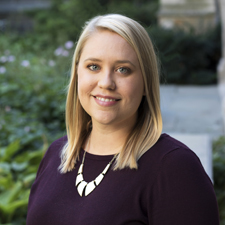
Ashley Dimmig, University of Michigan
Woven Spaces: Building with Textile in Islamic Architecture
“Into the Fold: Nineteenth-Century Ottoman Fabric (and) Architecture”
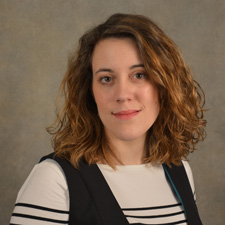
Sandra Gomez Todó, University of Iowa
Unruly Women in Early Modern Art and Material Culture
“‘But ev’ry Woman is at Heart a Rake:’ Sartorial Agency and the Disruptive Female Masquerader in Lady Elizabeth Chudleigh’s Iphigenia”
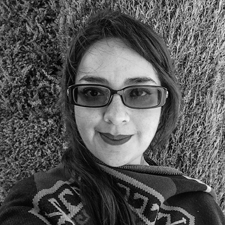
Tania Vanessa Alvarez Portugal
De-centering the “Global Renaissance.” Encounters with Asia and the Pacific Rim
“A Mexican Tarot? A 1583 Deck of Mexican Playing Cards”
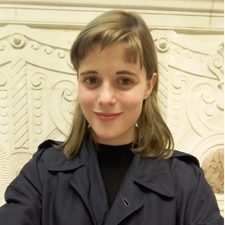
Emilie Anne-Yvonne Luse, Duke University
Avant-Gardes and Varieties of Fascism
“A Modern Pax Romana: Christian Universalism, Fascism and the Neo-Humanist Aesthetic of Waldemar George”
CAA GRADUATE STUDENT CONFERENCE TRAVEL GRANTS
CAA awards Graduate Student Conference Travel Grants to advanced PhD and MFA graduate students as partial reimbursement of travel expenses to the Annual Conference.
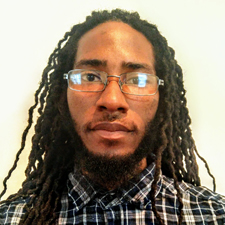
Mensah Bey
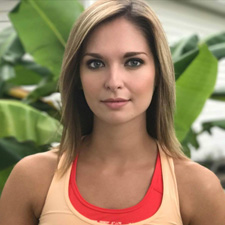
Allison Renée Dunavant
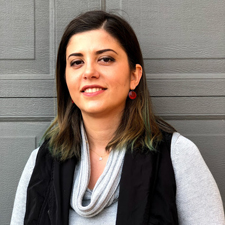
Ezgi Isbilen
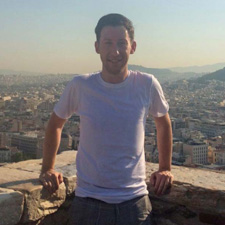
Steven Lemke
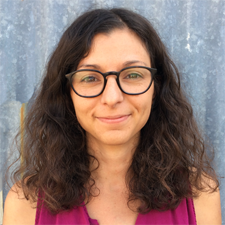
Kimberly Lyle
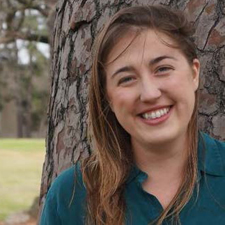
Kelly McClinton
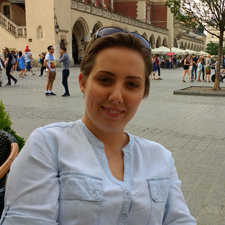
Maja M. Michaliszyn
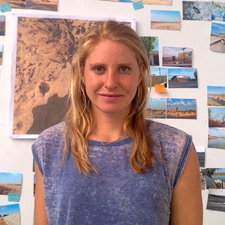
Hollis Moore
CAA INTERNATIONAL MEMBER CONFERENCE TRAVEL GRANTS
CAA awards the International Member Conference Travel Grant to artists and scholars from outside the United States as partial reimbursement of travel expenses to the Annual Conference.
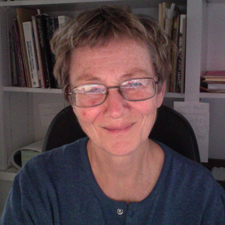
Pamela Gerrish Nunn
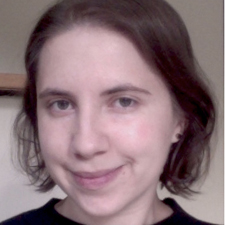
Erin McClenathan
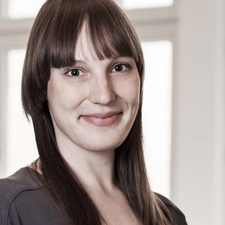
Friederike Schäfer
SAMUEL H. KRESS FOUNDATION CAA CONFERENCE TRAVEL FELLOWSHIP FOR INTERNATIONAL SCHOLARS
Recognizing the value of first-hand exchanges of ideas and experience among art historians, the Kress Foundation is offering support for international scholars participating as speakers at the 2018 CAA Annual Conference. The scholarly focus of the papers must be European art before 1830. Kress recipients will be announced in January 2018.
CAA-GETTY INTERNATIONAL PROGRAM
Every year since 2012, the CAA-Getty International Program has brought between fifteen and twenty art historians, museum curators, and artists who teach art history to attend CAA’s Annual Conference. This program is funded on an annual basis by the Getty Foundation. Click here to meet the CAA-Getty International Program participants.
News from the Art and Academic Worlds
posted by CAA — Nov 22, 2017
Each week CAA News summarizes articles, published around the web, that CAA members may find interesting and useful in their professional and creative lives.
Why A $450 Million Painting Attributed To Leonardo Da Vinci Worries Art Historians
The artwork has been hotly debated for years, but its sale signals one thing absolutely. (Huffington Post)
Arts Alumni Deeply Engaged in Their Communities
A report released by the Strategic National Arts Alumni Project demonstrates that arts majors – whether they went on to work in the arts or not – continue to strengthen the arts in their local communities. (SNAAP)
Olga Viso, Embattled Leader of Walker Art Center, Steps Down
In a surprise announcement, the Walker said Viso will leave by year end. (The New York Times)
Paying for the Job Search
Fordham’s English department is giving those finishing doctorates $4,500 each. (Inside Higher Ed)
Explore Guernica with a Sprawling Visual Timeline
A website launched by Madrid’s Reina Sofia museum serves as an interactive library. (Hyperallergic)
How Picasso Bled the Women in His Life for Art
“For [Picasso] there are only two kinds of women: goddesses and doormats.” (The Paris Review)
Found: The Last Piece of a Jigsaw Masterpiece by René Magritte
The fourth and final part of a painting ends an 80-year mystery. (Atlas Obscura)



